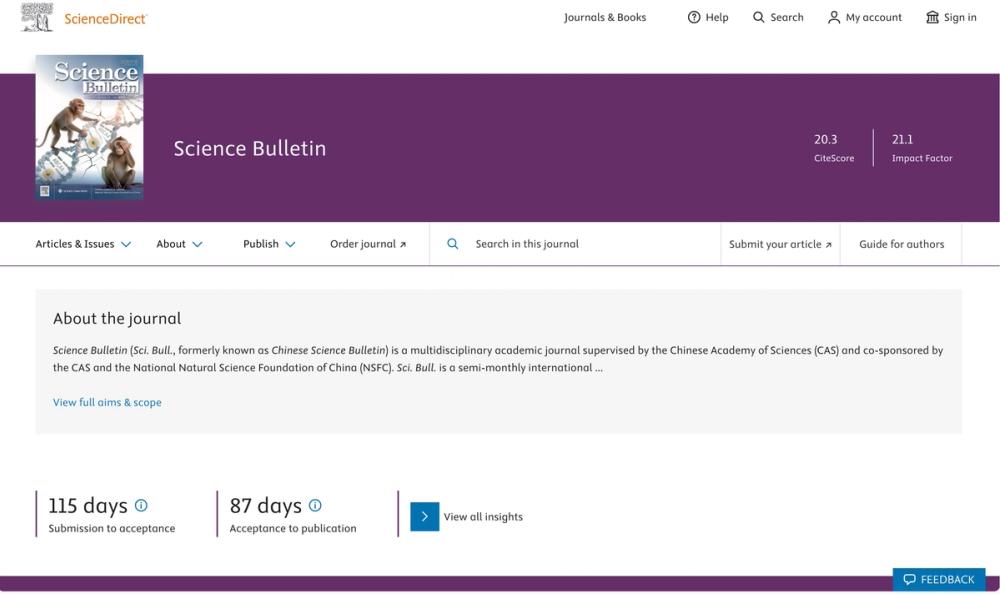Science Bulletin (Sci. Bull.), formerly known as Chinese Science Bulletin, is a prestigious, semi-monthly, peer-reviewed academic journal that has been a cornerstone of scientific publishing in China since its inception in 1966. Supervised by the Chinese Academy of Sciences (CAS) and co-sponsored by the National Natural Science Foundation of China (NSFC), it is published by Elsevier on behalf of Science China Press. The journal underwent a significant rebranding in 2015, changing its name to Science Bulletin to reflect its ambition to expand its international reach and influence while maintaining its commitment to high-caliber research. It is recognized as a leading SCI-indexed, multidisciplinary English-language scientific journal in China, with an impact factor of 21.1 as of June 2025, placing it in the top quartile (Q1) of multidisciplinary journals.
The journal publishes cutting-edge, peer-reviewed research across a broad spectrum of natural sciences and high-tech fields, emphasizing originality, scientific significance, and general interest. Its scope includes disciplines such as physics, chemistry, biology, earth sciences, materials science, nanotechnology, and engineering, among others. Science Bulletin prioritizes articles that report substantial advances in addressing significant scientific problems, typically accompanied by a 250-word abstract, 4–6 keywords, up to 6 figures or tables, and a maximum of 60 references. Supplementary materials are published online to support transparency and reproducibility. The journal also features other content types, such as News and Views (up to 2000 words), Commentaries (approximately 1000 words), and Correspondences (approximately 1000 words), which provide insights into recent scientific advances, policy issues, or notable publications.
Science Bulletin employs a rigorous peer-review process, overseen by an editorial board comprising over 100 top scientists worldwide, ensuring independent and unbiased editorial decisions. Only about 10% of submitted manuscripts are published, reflecting the journal’s high standards. All submissions, including invited papers (which constitute roughly 10% of published content), undergo initial evaluation by scientific and executive editors within 3–5 days to determine suitability for peer review. The journal offers a Fast-Track review option for papers requiring rapid assessment, based on scientific merit. It is indexed in major databases, including Science Citation Index, Scopus, PubMed, and others, enhancing its visibility and accessibility. Since 2011, all articles have been published open access under the Creative Commons Attribution license, making research freely available to a global audience.
In partnership with Elsevier since 2017, Science Bulletin has significantly increased its international readership and impact, with a 206% rise in monthly downloads by 2020 and a CiteScore of 24.6 as of 2023. Elsevier supports the journal through global marketing campaigns, usage analytics, and free three-month open access to cover stories, helping it attract a broader audience and more international authors. The journal’s commitment to fostering scientific discourse is evident in its efforts to provide timely, authoritative news and insights into global scientific trends. With an h-index of 162 and over 11,882 citations in the past three years, Science Bulletin continues to grow as a vital platform for groundbreaking research, bridging Chinese and global scientific communities.




